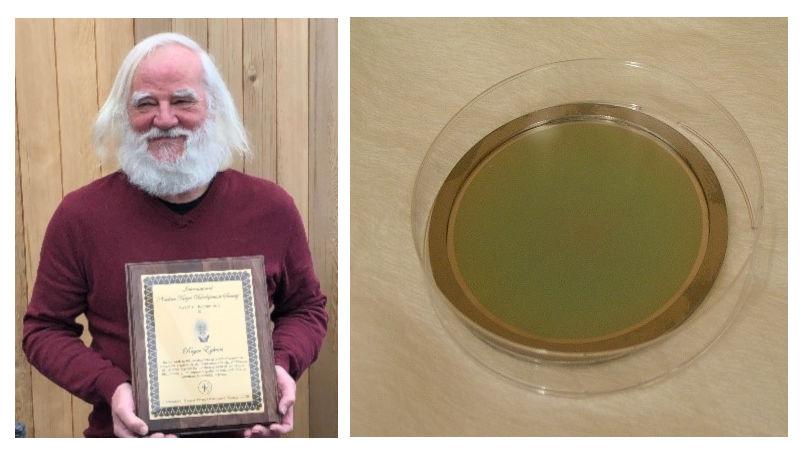
Roger Eykens, from JRC Geel, recently received from the Board of Directors of the International Nuclear Targets Development Society (INTDS) the INTDS 2020 Award of recognition for outstanding achievements in the development of target preparation techniques and for service to the Society.
Roger has been working in the JRC-Geel Target Preparation laboratories for 35 years and prepared and characterized nuclear samples, called “targets” for nuclear data measurements at the JRC’s and international accelerator sites. The quality of these targets has a strong impact on the results of the experiments and so on the neutron-induced reaction data, which are important for studies in fundamental physics, astrophysics, reactor safety, waste transmutation, nuclear medicine, material science, industry, and nuclear safeguards.
One of his main achievements was the development of a hydrofluorination process for uranium for the preparation of thin uranium layers by evaporative deposition in which the material to be deposited is heated to a high vapour pressure by electrically resistive heating.

Roger Eykens also took part in the two campaigns related to the preparation and characterization of LiF and B reference deposits for the measurement of the neutron life time. The sharp-edge deposits were prepared by physical vapour deposition and very well characterized for radius, profile and amount of isotope of interest.
The expertise of Roger was key to the JRC-Geel site in preserving the skills in the field as one of the very few sites world-wide that still has unique facilities and know-how in the preparation of thin film actinide deposits for nuclear data measurements.
The JRC published in several articles the achievements of Roger Eykens, please find below an incomplete excerpt:
R. Eykens, J. Pauwels, J. Van Audenhove, The hydrofluorination of uranium and plutonium, Nucl. Instr. and Meth. A236 (1985) 497
H. Mast, R.Eykens, J. Pauwels, C. Wagemans, 243Am targets for nuclear fission experiments: Requirements and realisation, Nucl. Instr. and Meth. A282 (1989) 107
J. Pauwels, R. Eykens, A. Lamberty, J. Van Gestel, H. Tagziria, R. D. Scott, J. Byrne, P. G. Dawber, D. M. Gilliam, The preparation and characterization of 6LiF and 10B reference deposits for the measurement of neutron lifetime, Nucl. Instr. and Meth. A303 (1991) 133
R. Eykens, A. Goetz, A. Lamberty, J. Van Gestel, J. Pauwels, Preparation and characterization of 35Cl and 36Cl samples for (n, p) cross section measurements, Nucl. Instr. and Meth. A303 (1991) 152
R. Eykens, P. Maier-Komor, J. Van Gestel, J. Pauwels, New aspects of thin polyimide foils, Nucl. Inst. and Meth. A362 (1995) 175
G. Sibbens, A. Moens, R. Eykens, Preparation and sublimation of uranium tetrafluoride for the production of thin 235UF4 targets, J Radioanal Nucl Chem (2015) 305:723-726
Related Content
Details
- Publication date
- 18 May 2021
